Nineteen tornadoes struck from Texas to Ohio and North Carolina on February 21-22, 1971. The greatest concentration of them was in Louisiana, Arkansas, Tennessee, and especially Mississippi. The outbreak was responsible for 123 deaths and nearly 1,600 injuries. This event (with 121 of the deaths on the 21st) accounts for over 1/4 of all February tornado deaths since 1950. It is regarded as the second deadliest February outbreak, behind the Enigma Outbreak in 1884.
The outbreak came together when a rapidly deepening surface low pressure system passed through parts of east Texas and toward central Missouri from the 21st through the 22nd. Concurrently, an upper-level low moved out of the Rockies on its way toward the the central Plains. To the southeast of the main surface low, a triple point developed in the vicinity of the Louisiana, Arkansas and Mississippi borders. Through the 22nd, this triple point headed toward Tennessee with a warm front draped eventually across the Carolinas.
The main show occurred on February 21, in the heart of the outbreak area — La., Ar., Ms., and Tn. — as temperatures rose into the 60s and 70s replete with high dew points. The devloping triple point helped spawn the eventual boundary where strong southeast and east winds could clash with the incoming air mass. Strong wind shear and abnormal instability for February combined to create a dangerous mix, all while a heavy snowstorm impacted the upper mid-west and the Plains.
The first storms of the evening began to spawn tornadoes between 3 and 5 p.m. in southeast Arkansas, northeast Louisiana, and western Mississippi. Storms continued to drop tornadoes across the area and to the northeast into Tennessee until late evening. The storms and tornadoes associated with them raced northeast at speeds up to and past 50 mph.Three of these tornadoes would become quite prolific and march northeast for hours, two are still ranked as the top two deadliest February tornadoes since 1950.
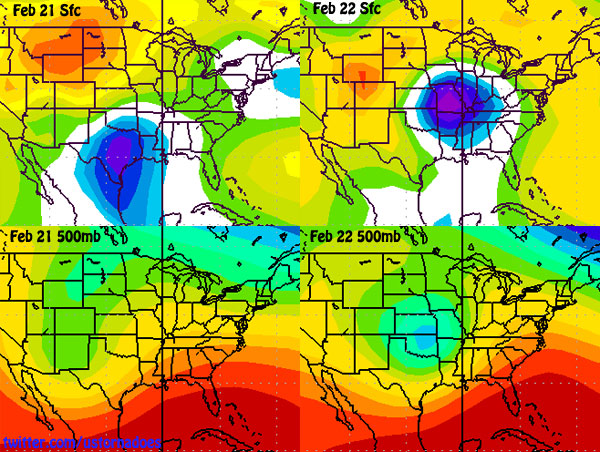
This outbreak was unusual, particularly for February, in its percentage (nearly 70%) of significant (F2+) tornadoes, with 13 of the group reaching such a strength. Over the two days, there were three F3s, two F4s and February’s only F5 tornado on record. As comparison, the Super Tuesday outbreak of February 5-6, 2008 had 10 EF-3/EF-4 and no EF-5s out of 86 total tornadoes. Keep in mind, it is possible that some tornadoes were not reported in 1971 or that one or more were classified as one tornado and was actually several.
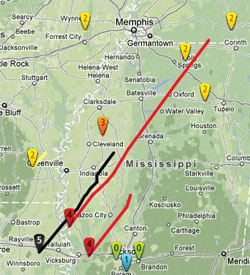 The F5 tornado in the Mississippi Valley Outbreak killed 47 people and injured over 500. It had a track length of an incredible 109 miles, and was 500 feet wide at its greatest. It’s also the only F5 on record (since 1950) to strike Louisiana. Perhaps the hardest hit place from this tornado was Inverness in Mississippi. The town was basically completely destroyed and 21 people died there. At any time of year, this was a respectable tornado on every metric, and for February it was rather astounding.
The F5 tornado in the Mississippi Valley Outbreak killed 47 people and injured over 500. It had a track length of an incredible 109 miles, and was 500 feet wide at its greatest. It’s also the only F5 on record (since 1950) to strike Louisiana. Perhaps the hardest hit place from this tornado was Inverness in Mississippi. The town was basically completely destroyed and 21 people died there. At any time of year, this was a respectable tornado on every metric, and for February it was rather astounding.
Sadly, the F5 tornado was not the deadliest of this outbreak. That status is held by an F4 which traveled from just east of the Louisiana/Mississippi border all the way to Tennessee and had an amazing track length of 202 miles (there is some question to the Tennessee portion, and this may have been a family of tornadoes rather than just one). This tornado completely leveled several small towns, and killed entire families in its path. It is ranked as the deadliest tornado in February during modern records.
Though the majority of tornadoes happened in fairly close proximity to each other, F2+ tornadoes occurred in Texas, Ohio and North Carolina as well. Both Ohio and North Carolina were hit by F3s on the 22nd. The North Carolina tornado was particularly prolific, starting in Fayetteville and moving on a path to the northeast for 85 miles.
Quick Stats
Number of tornadoes: 19
Number of significant (F2+) tornadoes: 13
States impacted: Tx., Ar., La., Ms., In., Oh., SC, NC
Tornadoes with 50+ mile paths: 4
Deadly tornadoes: 5
Fatalities: 123 (121 in La. and Ms.)
Injuries: 1,592
Sources
Tornado History Project. http://www.tornadohistoryproject.com
Thomas P. Grazulis, Significant Tornadoes 1680-1991 (Environmental Films, 1993).
NOAA Earth System Research Laboratory, Daily Mean Composites. http://www.esrl.noaa.gov/psd/data/composites/day
NOAA Central Library, U.S. Daily Weather Maps Project. http://docs.lib.noaa.gov/rescue/dwm/data_rescue_daily_weather_maps.html
Latest posts by Ian Livingston (see all)
- Top tornado videos of 2023 - January 1, 2024
- March 31, 2023 tornado outbreak videos - March 31, 2023
- Top tornado videos of 2022 - December 31, 2022
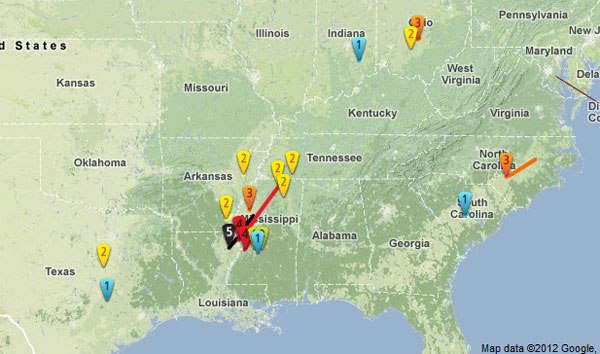
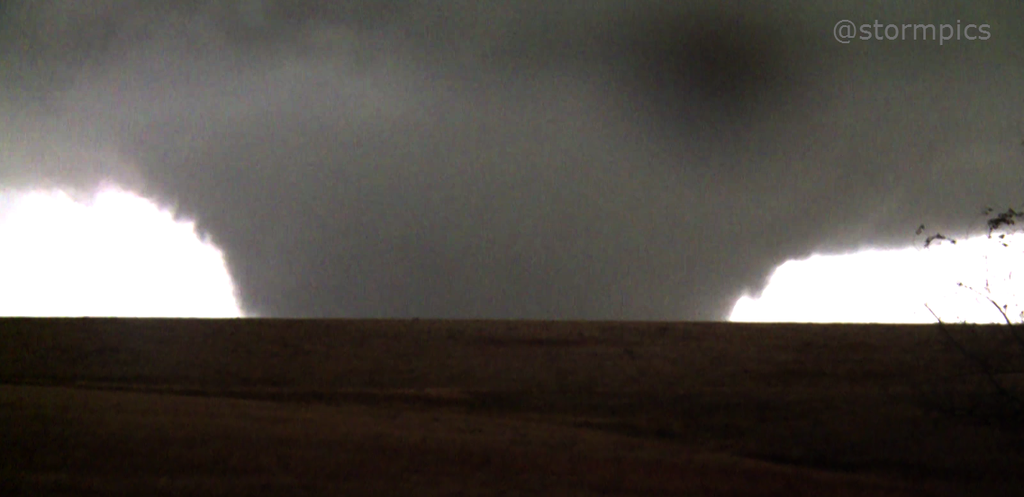
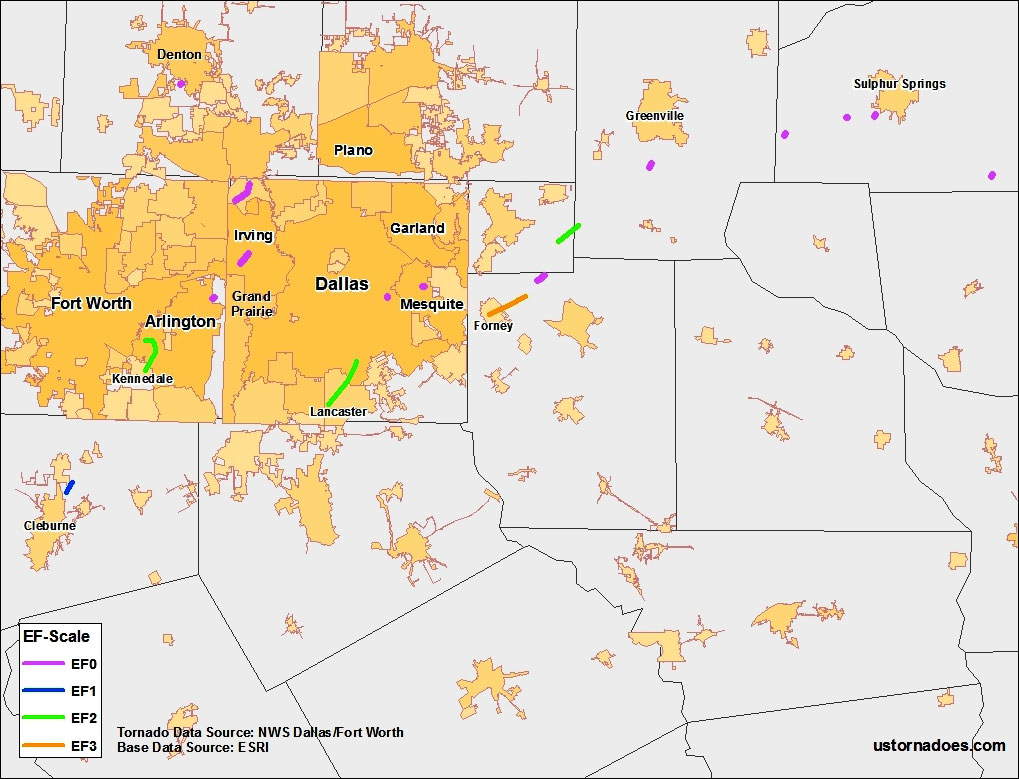
I was 9 years old when this happened and living in Jackson, MS. For most of that day and night I was so scared since all the local media could do then was put out the warnings from the NWS (no weather break-ins, no radar, just announcers telling us the Mississippi sky was falling all around this). Of course this breakout occurred five years after the Candlestick Park tornado that hit Jackson. Since then I have had a real interest in tornadoes (although at age 60, I have yet to see one in person eventhough I have been trained as a spotter.
I was in Belzoni, MS. the day the f4 and f5 tornadoes came out of Delhi, La. crossed the Miss. River
and traveled through Little Yazoo, Delta City, and Invernice, MS..
I went out to the bypass in Belzoni, MS. that day to see what was going on and was terrified to see the f5 crossing the field aprox 1/4 to 1/2 mile from the bypass, headed straight for Belzoni. It was the most horrific weather system I have ever seen!!! I looked directly across the bean field into the face of what looked to be a black, black cloud rolling across the field slowly and I could see sheets of tin, tractor, combine and house roofs and stuff rolling in the monster cloud. I went with my wife to fine a place below ground because I realized nothing above ground would be left standing. We were blessed in Belzoni, MS. because after hitting Invernice, MS. the f5 took a left turn around Belzoni and went up through Pugh City, toward Morgan City.. I helped out in one of the 2 hospitals in Belzoni that day and into the night. The hopitals were covered with the injured and dying lining the halls on mattresses and all the rooms were filled up! A lady came in in a ford galaxy station wagon with her grandson lying in the back with a 2×4 stuck through his chest. The doctors sent me to Jackson with the young man but I never got out of Belzoni, because the car needed gas and all the gas pumps were shut down from the storm. I took him back to the hospital where he expired. We had national guard 6x6s bringing dead and injured into the hospital for days. I had just gotten back from Viernam as a combat Marine in 1969 and the devastation and distruction of that storm looked like a war zone.
Those memories are horrific.
Daddy and Mr Sam were in Arkansas at a farm estate sale… Mama and us for kids were by ourselves and I can tell my mother was worried about the weather and put us between the couch and the fireplace, it was the F5 tornado we could hear roaring like a train not too distant…a line of pecan, oak and other hardwood trees edge the field just south of our house..We have always thought that has protected us somewhat from tornados that day and since,,,,We were not in it’s direct path, a half mile to the west of it’s path,,it certainly barreled across our farm,,i I want to know the coordinates of its exact path
My grandfather was killed by the tornado that hit Little Yazoo and Anding. My grandmother suffered a broken hip and my older brother was ripped from my grandmother’s arms and landed in a puddle of water unharmed. God spared my brother and grandmother that awful day. I wasn’t born at the time but my grandmother told us the story many years later. It was a sad day but I’m thankful God spared my brother and grandmother. I’m researching to see how much information I can find on these storms. I’m curious to see what exactly happened to grandfather that I didn’t have the pleasure of meeting or knowing. I would like to see the exact path that the tornado travelled and what was the exact cause of death for my grandfather. I was always told that he opened the door to see what was happening and the tornado lifted him out of the door.